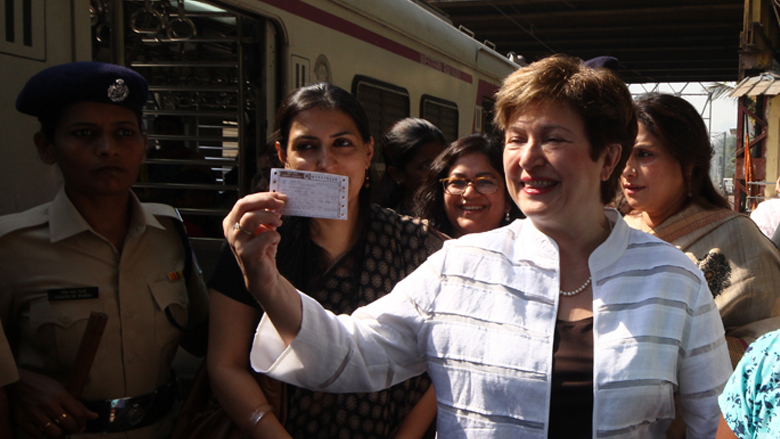Down the winding, narrow alleys of one of the world’s largest informal settlements is a revelation.
The Dharavi Transit Camp Municipal School in the teeming metropolis of Mumbai is educating the most vulnerable and excluded children. Those with special needs—cerebral palsy, autism, as well as hearing, visual and speech impairments—receive therapy and rehabilitation and join other pupils in regular classes.
This example of how the government of India is delivering services to the most vulnerable is a hopeful sign for the country. By making sure that even the most vulnerable have a chance to participate in society, the government is helping the country to benefit from the productive potential of as many of its citizens as possible.
Dharavi’s jumble of cramped tenement blocks is proof of this potential. As one of the world’s largest informal settlements, it is also home to countless informal businesses that have an estimated annual turnover of $1 billion.
India’s economic dynamism—even visible in Dharavi—is part of the story that has turned India into a bright spot in the global economy. The World Bank is forecasting 7% economic growth in India this year, making the country the fastest growing large economy. The implementation of the goods and services tax (GST) and government expansion of infrastructure investments, as indicated in the recent budget, should further support economic expansion. This growth is good news for Dharavi’s inhabitants as well as for the millions of other people in India who are working hard to become more prosperous. With economic growth comes an expanding horizon of opportunity.
I drew a number of conclusions from my first visit to India as the World Bank’s chief executive officer, reflecting what I saw and what I heard in a variety of meetings.
The first is that the world needs a successful India. India is a low middle-income country with growing global impact. A successful India can help boost global growth. This will help the world end poverty and become more prosperous. A successful India will have a huge impact in achieving global goals, such as addressing climate change and overcoming communicable diseases.
A second conclusion is that India faces challenges in transforming itself from a low to a high middle-income country. Economic growth is good news. But for economic growth to be sustained it must be more inclusive in raising the living standards of the most marginalized and vulnerable. This means giving the poor and women a fair share of India’s growing prosperity. It means ensuring that India’s youth are offered the skills training for better-paying jobs.
The school in Dharavi is an example of delivering services in a demanding urban setting. As more Indians move from the countryside to cities, it will become more challenging to meet the aspirations of a rapidly urbanizing country. People will expect investments in transport, skills and many other areas. The World Bank is investing in India and these investments—in transport, skills training, climate change, to mention just a few—can help India to draw in funds from other investors.
In addressing rapid urbanization, one should not forget that most Indians still live in rural areas. Their livelihoods depend on agriculture. What is already a hard way to make a living is becoming harder still due to the rapid depletion of water resources and climate change. Indian agriculture will need to become more climate resilient to continue delivering crop yields as the climate heats up. As the country’s leaders are aware, India as a whole will need to address the long-term issues of environmental sustainability.
An example for this was the subject of constructive discussions during my visit: the Indus Waters Treaty between India and Pakistan to which the World Bank is a signatory.
Dating from 1960, this treaty has withstood tensions between India and Pakistan, including conflict, and continues today to provide a framework for irrigation and hydropower development.
The treaty continues to be an important source of stability and cooperation, but it faces new pressures. Along with burgeoning populations and soaring water use, we now also have climate change. In the first 45 years treaty disagreements were settled by the Indus Water Commission. In the past 12 years, the most contentious of these have been elevated to a neutral expert and a court of arbitration.
What these last 12 years tell us is that South Asia needs to find ways to manage growing demands more sustainably for the benefit of all. Disagreements about water are not just inter-state, but also intra-state. What is needed is a regional integrated water resources management approach. This would include water, soil and erosion, and land-use management planning to increase agricultural productivity, hydropower production, and conservation of natural resources while protecting the ecosystems of the Indus and other major rivers across South Asia.
Environmental sustainability will provide a more sustainable future for India’s people—for their sake and for the contribution a successful India would make to the world. It is wonderful to see signs of this future on display in India today.

